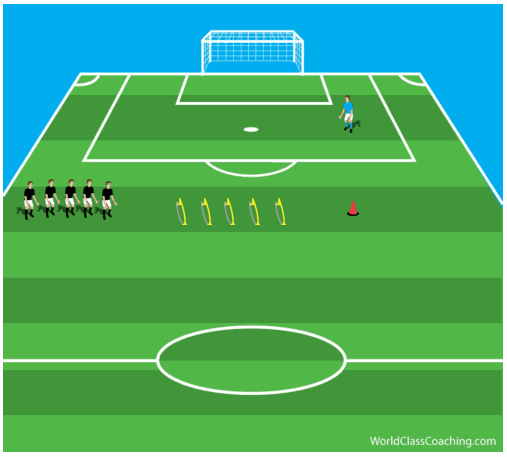Soccer Science: In-Season Plyometric Training Improves Power-Related Performance Parameters
By Justin Cresser
Today’s article is a first of a series entitled ‘Soccer Science’, in which we present the latest findings from Sports Science research in soccer, and discuss how these findings may influence the way we train we our players.
ARTICLE TITLE:
The title of the article we will discuss today is: ‘Effects of in-season short-term plyometric training program on leg power, jump- and sprint performance of soccer players.’ It was published in the October 2010 issue of the Journal of Strength and Conditioning Research. The article can be accessed by clicking on the link below:
http://www.ncbi.nlm.nih.gov/pubmed/20844458
MAIN FINDINGS:
The main findings from this article are that- in comparison to players who partake in a normal training program, youth soccer players that complete plyometric training twice per week, in addition to their normal training routine, performed significantly better on power-related assessments such as the squat jump, the countermovement jump and the first 5 meters of a 40 meter-sprint. As such, these exercises are highly recommended as part of both pre- and in-season training programs.
APPLICATION TO TRAINING:
Explosive power is critical to successfully performing many movements and actions required in soccer such as accelerating past a defender, vertical jumps, and shooting from distance. Training for power can be done with Olympic-style weight training, medicine ball training or plyometric training. However, plyometric training, which involves doing jump-related exercises that focus on training the muscles to produce the maximum amount of force in the shortest amount of time, is probably the most convenient. Many coaches do not incorporate this type of training during the competitive period either due to a lack of time or the belief that the high-intensity nature of these exercises may be counter-productive to on-field performance. However, the results of the article presented above suggest that it may be beneficial for coaches to include them in training sessions during the in-season as well. An important consideration is the volume of plyometric exercises. Doing 1 to 2 sets of two exercises should be adequate. High volume workouts are not recommended for in-season training.
The following are two plyometric exercises that can be incorporated into training once per week during the competitive period to improve the explosive power in your players:
SAMPLE ACTIVITY 1:
This exercise uses the space just outside the penalty box for the playing area. Set up a row of five hurdles, in a horizontal line, so that the row is approximately 10 yards from the top of the 18-yard box. Each hurdle should be approximately 1 yard apart. Have your players stand 5 yards behind the first hurdle in the row. Place a small cone 7 yards away from the last hurdle in the row so that it is also 10 yards from the top of the penalty box (Figure 1).
When ready, have the player at the front of the line run towards
Continue reading
